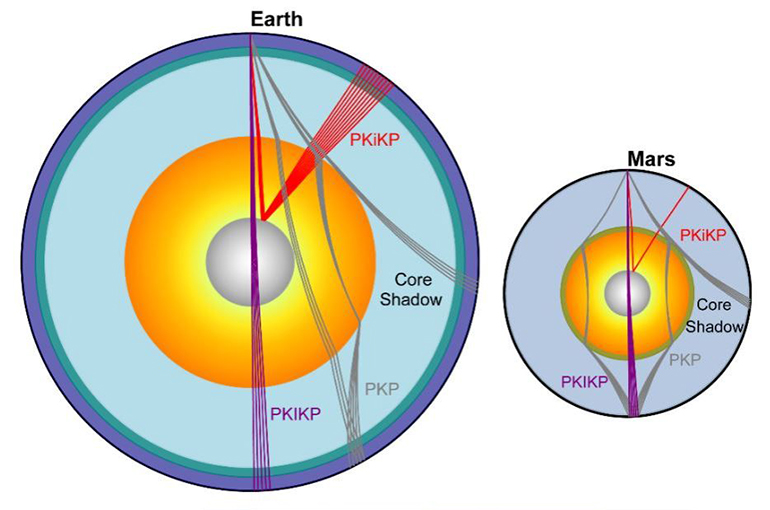 Chinese, US Scientists Prove Mars Has Solid Core Like Earth
Chinese, US Scientists Prove Mars Has Solid Core Like Earth(Yicai) Sept. 8 -- A team of Chinese scientists collaborating with a US researcher has discovered that Mars has a solid inner core, proving that the red planet has a similar internal structure to Earth.
The team, led by Sun Daoyuan and Mao Zhu from the University of Science and Technology of China and collaborating with Douglas Hemingway, a researcher at the University of Texas Institute for Geophysics, discovered Mars' core by conducting an in-depth analysis of marsquakes, tremors of the planet's surface or interior, recorded by the InSight lander of the US' National Aeronautics and Space Administration, according to a study published in UK scientific journal Nature on Sept. 3.
The team made array analyses on data from 23 marsquakes events with relatively high signal-to-noise ratios to extract key seismic phases passing through Mars' core. They measured the radius of the planet's solid inner core to be around 600 kilometers, accounting for about a fifth of its total.
In addition, the marsquake data revealed an around 30 percent jump in wave velocity and a 7 percent difference in density between Mars' outer and inner cores. Based on these findings, the team analyzed the mineral composition of the inner core, showing that it is composed of iron and nickel and may also contain 12 to 16 percent of sulfur, 6.7 to 9 percent of oxygen, and up to 3.8 percent of carbon.
This type of planetary core structure containing light elements provides important clues to the evolutionary history of Mars' magnetic field from its early activity to its current silence and lays a critical foundation for comparing the internal evolutionary differences between Earth and other terrestrial planets, the team pointed out.
The study is the first of its kind to confirm the existence of a solid inner core in a planet other than Earth, Xinhua News Agency reported on Sept. 4. It shows that Mars has a core-mantle differentiation structure similar to Earth.
The innovative method used in the study also provides an important reference for future missions, such as lunar exploration, in employing seismological methods to probe the deep structures of celestial bodies, Xinhua noted.
Editor: Martin Kadiev